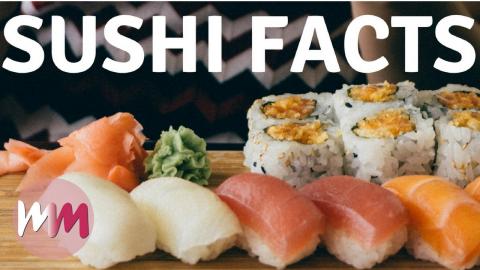Top 5 Things You Won't Believe about Sushi

#5: Uni Isn't JUST Sea Urchin
The culinary world of sushi offers the refined eater with plenty of room for exploration. Case in point… uni. This distinctly smooth, creamy substance, with its subtle, briny oceanic flavor isn't for everyone. But those who have a taste for this delicacy… absolutely adore it. If you ask your server what it is, the response you're likely to get it is “sea urchin”, or perhaps “sea urchin roe”. Both answers however, sidestep the truth. Uni is in fact the gonads, or reproductive organs, of a male or female. Don't worry, they're totally edible!
#4: The Old Variety of Sushi Had a Funk To It
According to legend, sushi was accidentally invented by a woman who hid her rice in a bird's nest, only to have it ferment and become mixed with bits of fish the bird had left behind. While this particular origin story is a little hard to swallow, that was essentially the recipe for the earliest known forms of the dish, which date back thousands of years. Funazushi, a specific type of preparation, has an aging process as long as four years. The end result is said to be reminiscent of blue cheese. Although tasty, the smell makes this unpopular these days.
#3: Salmon is Popular, But Not Traditional
Sushi made its way to America in the early 1900s, but only became a trend half a century later in places like Los Angeles and New York City. Its adoption by Americans brought new techniques and adaptations like the California roll. But for all these innovations, it might be surprising that salmon was a late addition to the sushi game. In the '80s, Norwegian fisheries introduced it to the Japanese market, opening their eyes and mouths to raw salmon. It soon was embraced by the entire world, and the rest is delicious history.
#2: You Can Thank an Earthquake for the Sit Down Sushi Experience
Nowadays, there are many ways to get your sushi fix. You can pay a small fortune for expertly prepared plates in beautiful, critically acclaimed restaurants, buy it pre-packaged at your local grocery store, have it delivered or even visit a food truck. That last option is the closest to how sushi was first sold. Before the Great Kanto earthquake of 1923, sushi was almost exclusively served as a street food from carts and stalls. This catastrophe led to a drop in property value, which actually allowed those sushi vendors to move their operations indoors and offer a seated experience.
#1: We Didn't Always Eat the Rice
In modern sushi culture, most preparations involve a mixture of rice and seafood. In the case of makizushi, other complimentary ingredients like seaweed paper, known as nori, are also involved. For a lot of us sushi fans, rice is a key part of the textural equation. But back in the day, it was a simple preservative agent that was thrown away before consumption. Traditionally, it was all about the fish. Once rice vinegar was introduced, it changed the sushi-making process entirely, and people got to enjoy the delectable combination of fish and rice.


 0
0
 0
0
 report
report